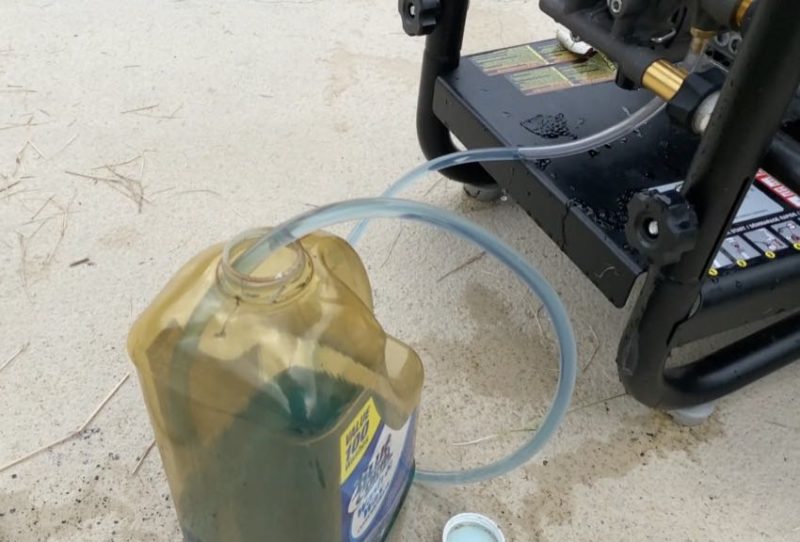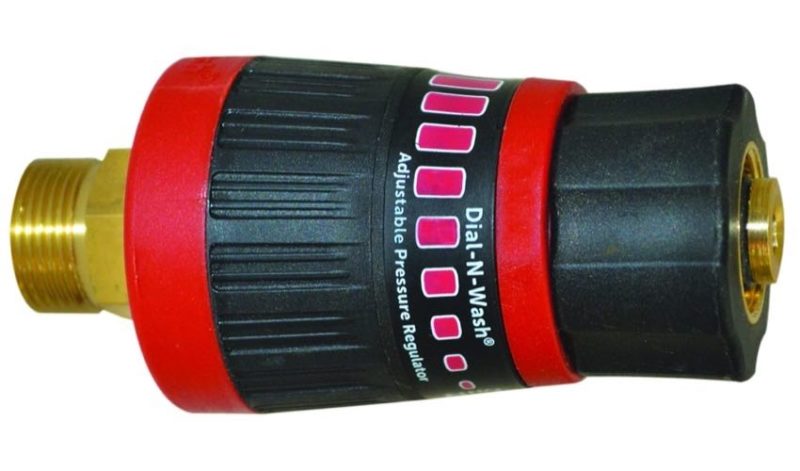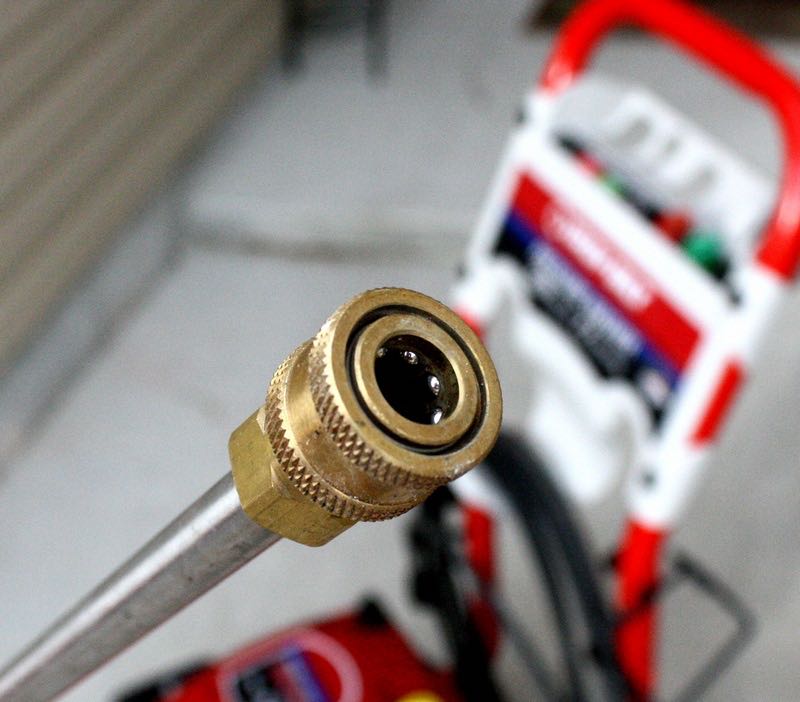Using a pressure washer properly lets you clean your deck or the outside of your home. You need to know how to use the washer properly and safely so you don’t damage your property or cause injury to yourself. You also want to choose the best pressure washer since they vary in size and capability. Knowing a few things about their differences and settings will help you to achieve the best possible success with your cleaning projects.
Check out our best electric pressure washer article to see our top picks
Steps in How to Use a Pressure Washer
Step 1: Prepare the Area
Before you start using a pressure washer, make sure you have cleared the area of anything that could be easily broken. As the tool’s name suggests, the water is going to be coming out at high pressure. It can do a lot of damage if you aren’t careful. If you’re cleaning your deck, you want everything moved off the surface. If you’re cleaning the exterior of your home, make sure you have identified electric boxes and other areas you don’t want to touch with the water stream.
Step 2: Choose a Cleaning Agent (Optional)
Many people who choose to pressure wash a deck, concrete, or siding also want to add some type of cleaner to the spray. This lets you kill two birds with one stone…or pressure washer. If you have mildew growing on your deck or on part of your siding, consider adding a 10% bleach solution to the water. When using a cleaning agent in the water, make sure it doesn’t damage your home’s siding. You also don’t want it to damage any of the plants it may come in contact with. There are several systems available as add ons to pressure washers that facilitate mixing additives and cleaning solutions to the water in proper quantities.

Step 3: Attach the Pressure Washer Hose to Water Supply
In most cases, you typically get water into the pressure washer by attaching it directly to a water hose. This should provide sufficient amounts of water to power the washer. Once you have it attached, you can start the pressure washer. Be sure not to touch the trigger until you want to begin cleaning.
Also, make sure to use a good-quality hose. Use our best garden hose recommendations if you don’t know where to start.
Step 4: Set or Monitor the Pressure Level
While some pressure washers let you adjust pressure via a pressure-regulating control, most do not. The nozzles adjust the fan width of the spray. Consequently, the wider the spray pattern, the less pressure applied to the overall surface.
With a pressure washer, you primarily adjust pressure by varying the distance of the tip from the surface you’re cleaning.
No matter how you plan to adjust for pressure—you want to understand the output pressure level of the water before you start. You want enough pressure to clean a surface well, such as a deck. However, you want to avoid using excessive force that can damage harder woods or the siding of your home. Always consult the instruction manual of the pressure washer first to see what settings they recommend for various uses. Then, experiment on an area you won’t damage any surfaces by starting with a lower pressure tip and more distance.

Step 5: Select the Right Pressure Washer Nozzle
Most pressure washers use a quick-connect nozzle that varies the output pressure and sets the spray pattern for the pressure washer. Knowing which pressure washer nozzle to use helps you get the job done properly—and safely. The tips are frequently color-coded to indicate the fan pattern and thus the pressure.
- Red nozzle
Zero degrees which results in a tight pencil point pattern. Since it creates no fan pattern, it produces the highest pressure washer level possible. This is most certainly NOT the nozzle you would use for general cleaning purposes. You would use this tip for high pressure cleaning of metal surfaces or to really chew away stubborn concrete stains. - Yellow nozzle
This produces a 15 degree fan pattern and it perfect for use as a virtual “scraper” to take off paint or stubborn mildew stains from PVC fencing. The truly tough stains will call for this tip more often than any others. - Green nozzle
This tip yields a 25 degree fan pattern. Primarily used for washing, this is the tip you’ll use for tough jobs that need a good balance between scrubbing power and delicacy on the surface. - White nozzle
This 40 degree fan tip is perfectly suited for rinsing and delicate washing. These are the tips to use for washing/rinsing glass or washing vehicles. These are great tips for wooden decks and all delicate substrates. - Black nozzle
These tips work really well when using chemical additives. It results in a wide spray with the lowest pressure, helping to facilitate a siphoning action to introduce the chemical to the water flow. When using a pressure washer to apply soap or other chemicals, the black tip works best.
Step 6: Begin Spraying
Depending on what you are washing, you’ll need to use a slightly different technique. If you are spraying your deck, use a sweeping motion, always moving away from the house, to apply the water. Use the same motion and direction the entire time to prevent leaving marks behind on the surface of the deck. The tighter the spray pattern, the more likely you are to over-clean an area or leave marks. If you are spraying down the side of your house, use the same sweeping motion from side to side, always starting on the same side, but begin at the top of your house and work down. Remember to always hold the wand tightly during the wash. Otherwise, you could injure yourself or someone else.
Step 7: Keep Pressure Washing
You’ll want to keep moving around your deck, patio, or home with the pressure washer until you’ve thoroughly cleaned it. If you run into trouble with the washer, check the intake valve or make sure the water supply is coming through correctly.
Ensuring you follow these steps correctly and adhere to the manufacturer’s suggested procedures will result in a successful cleaning project.



